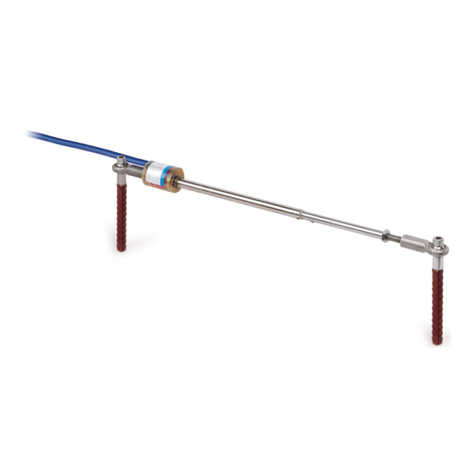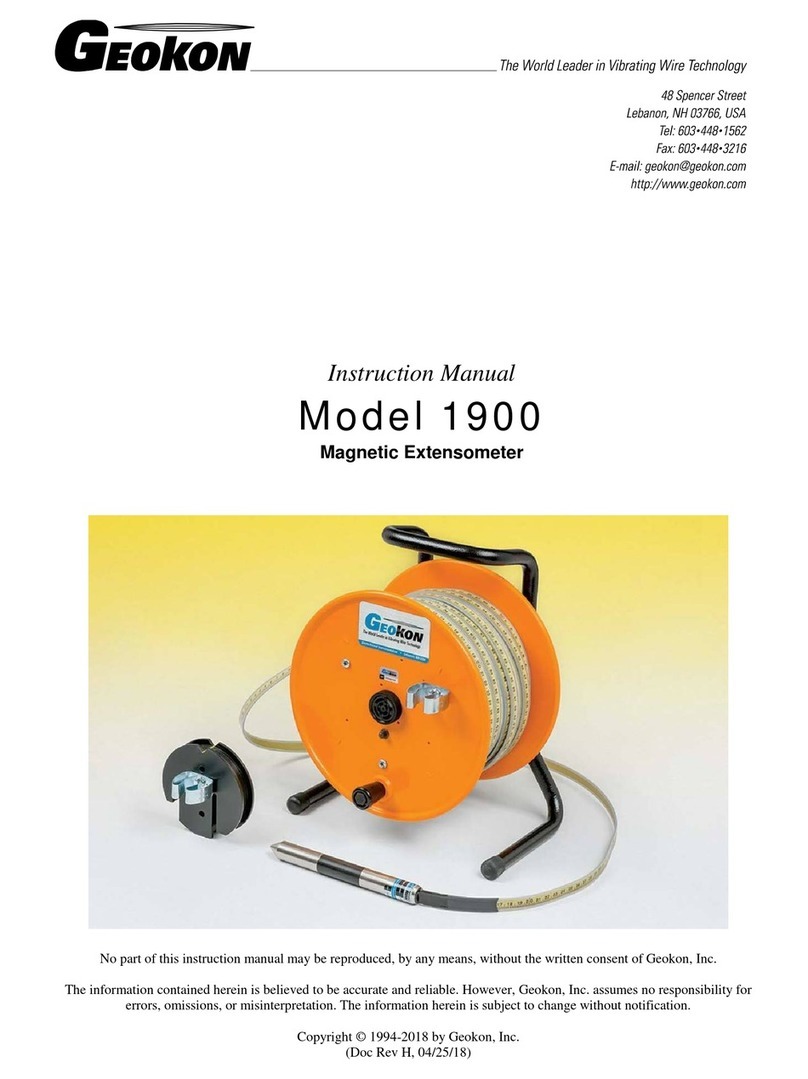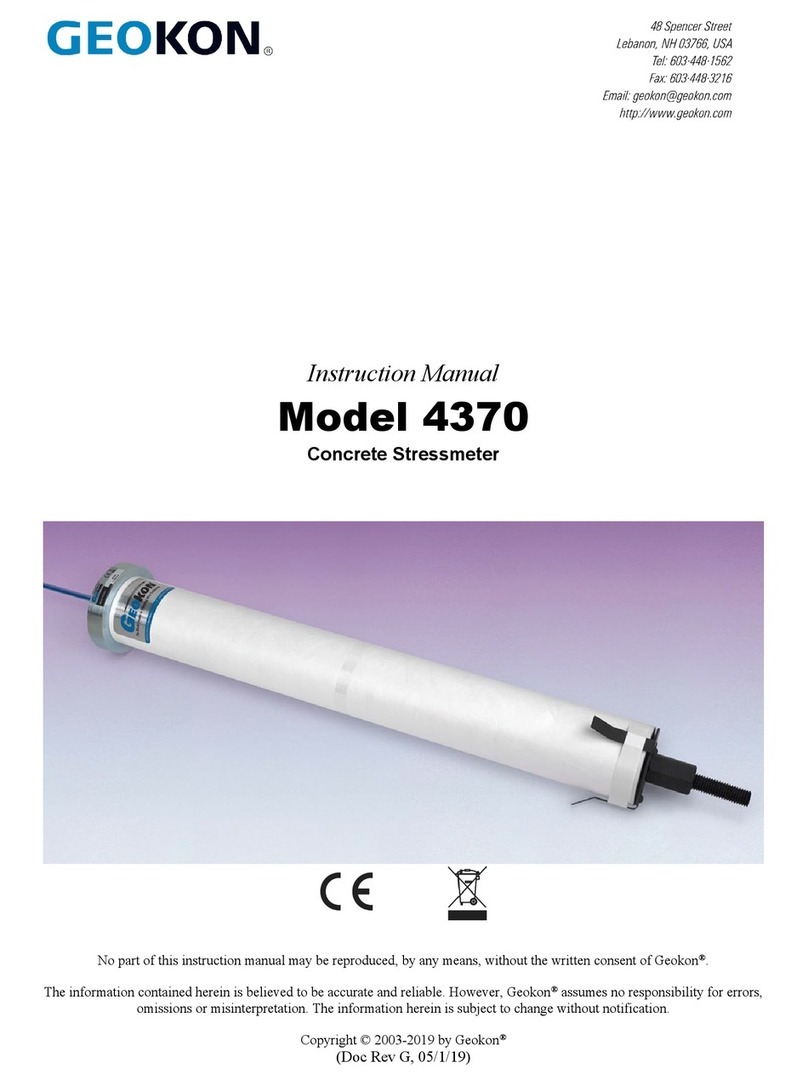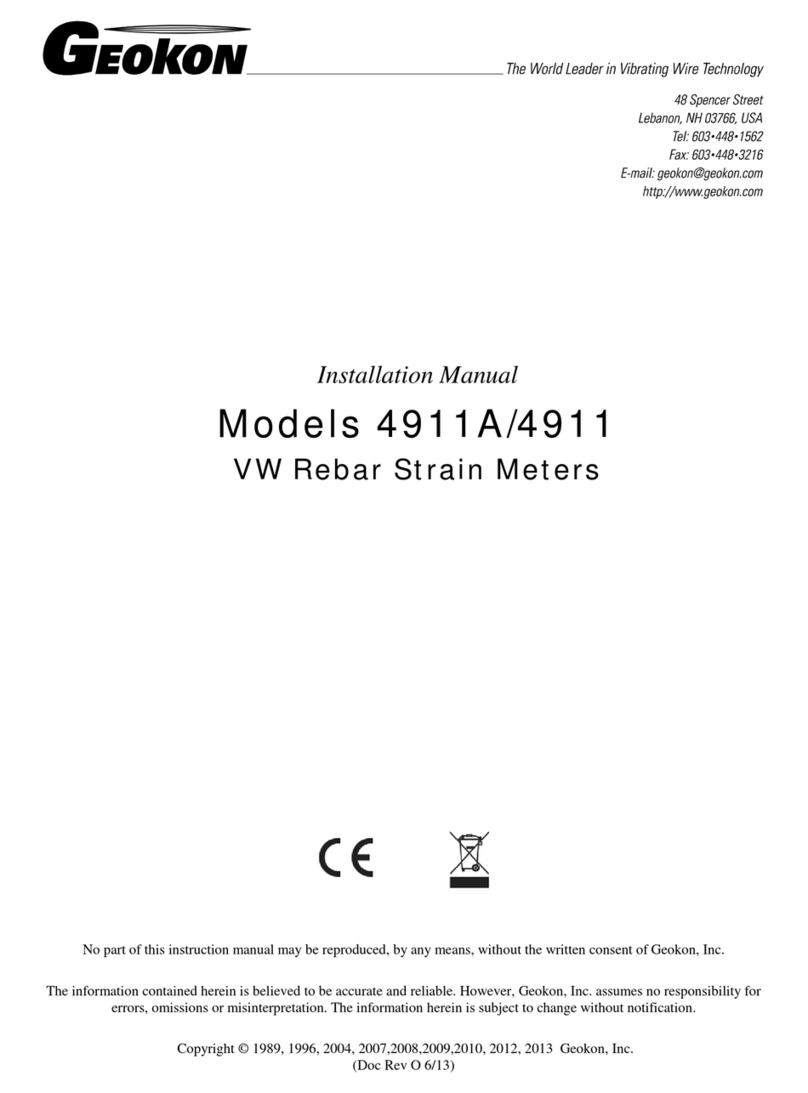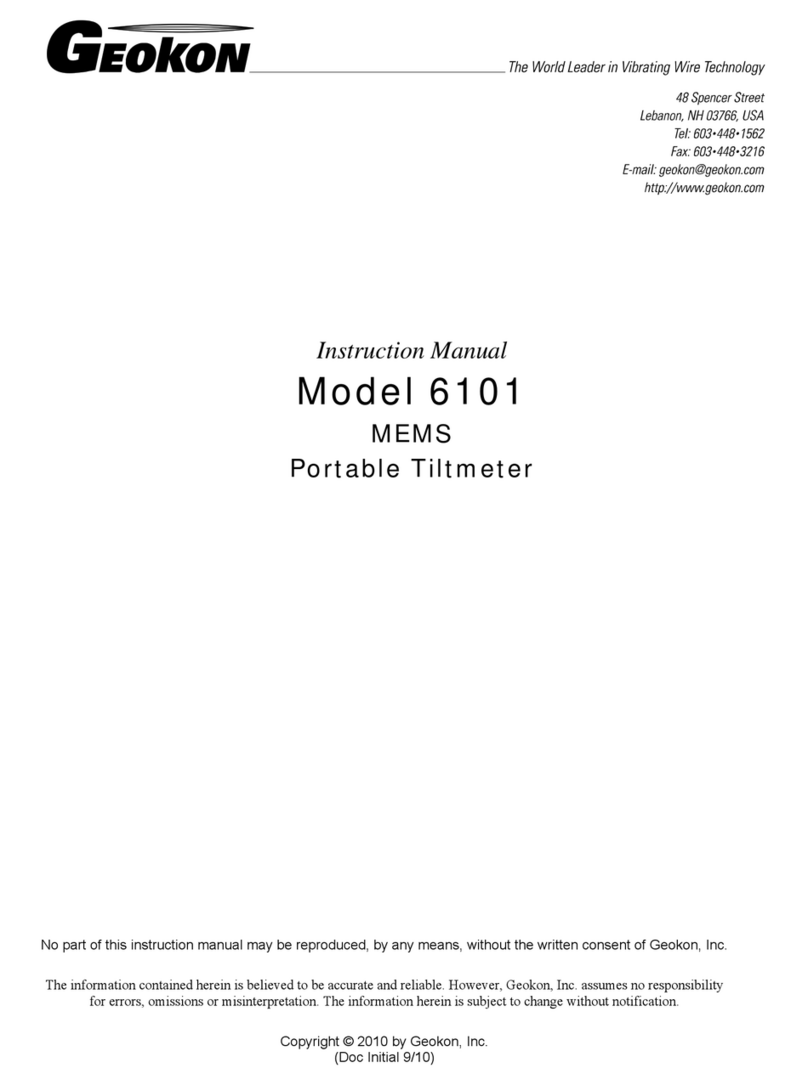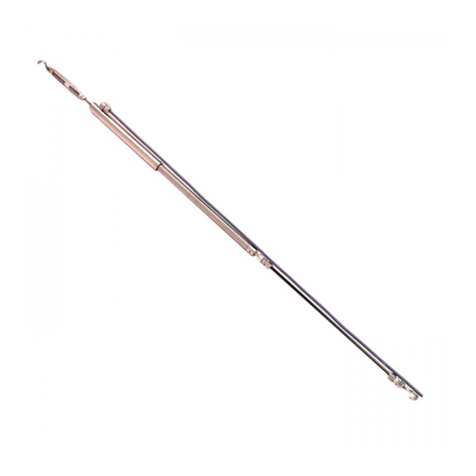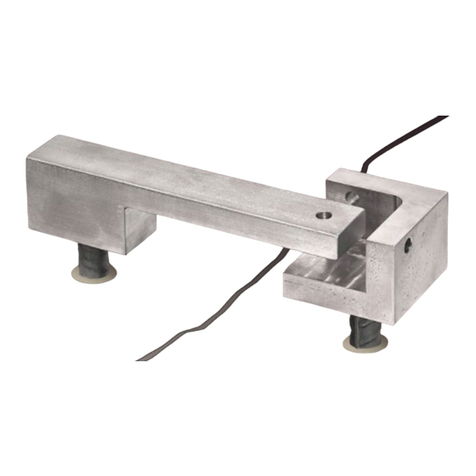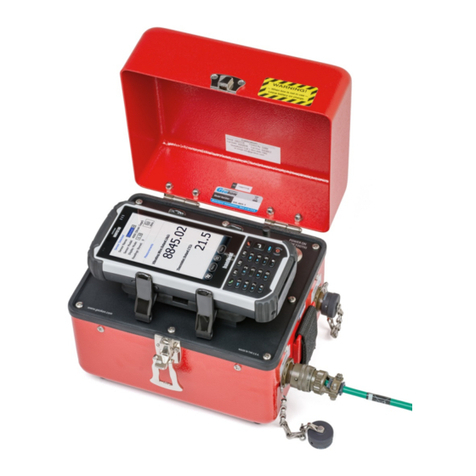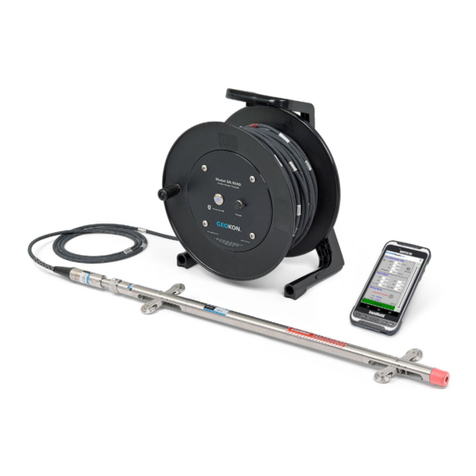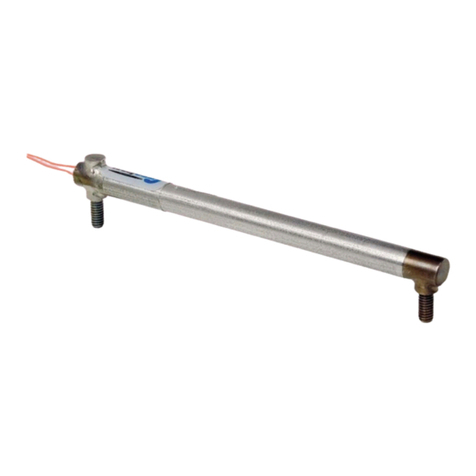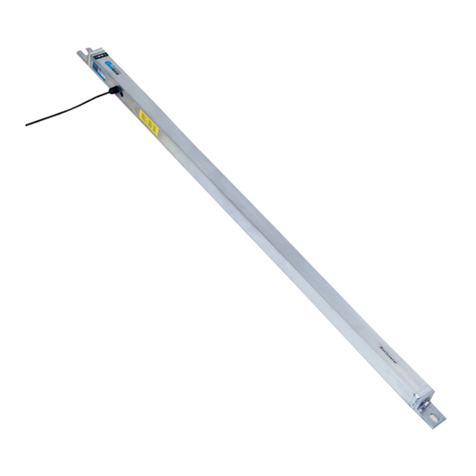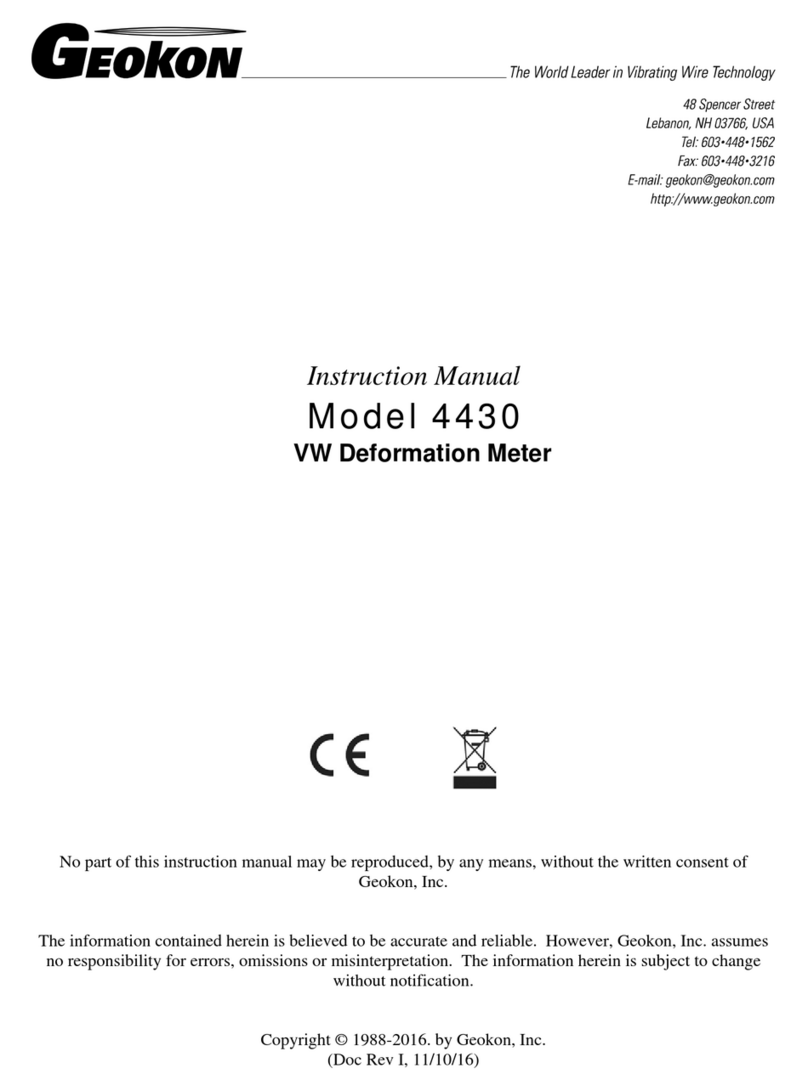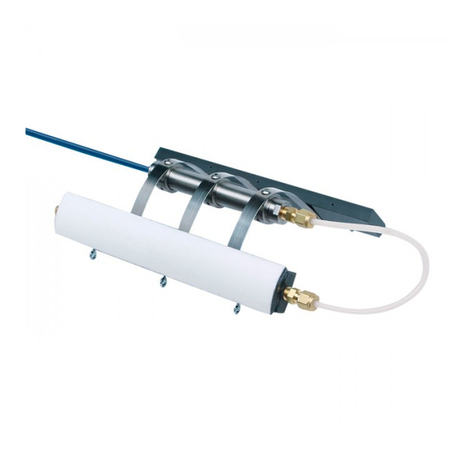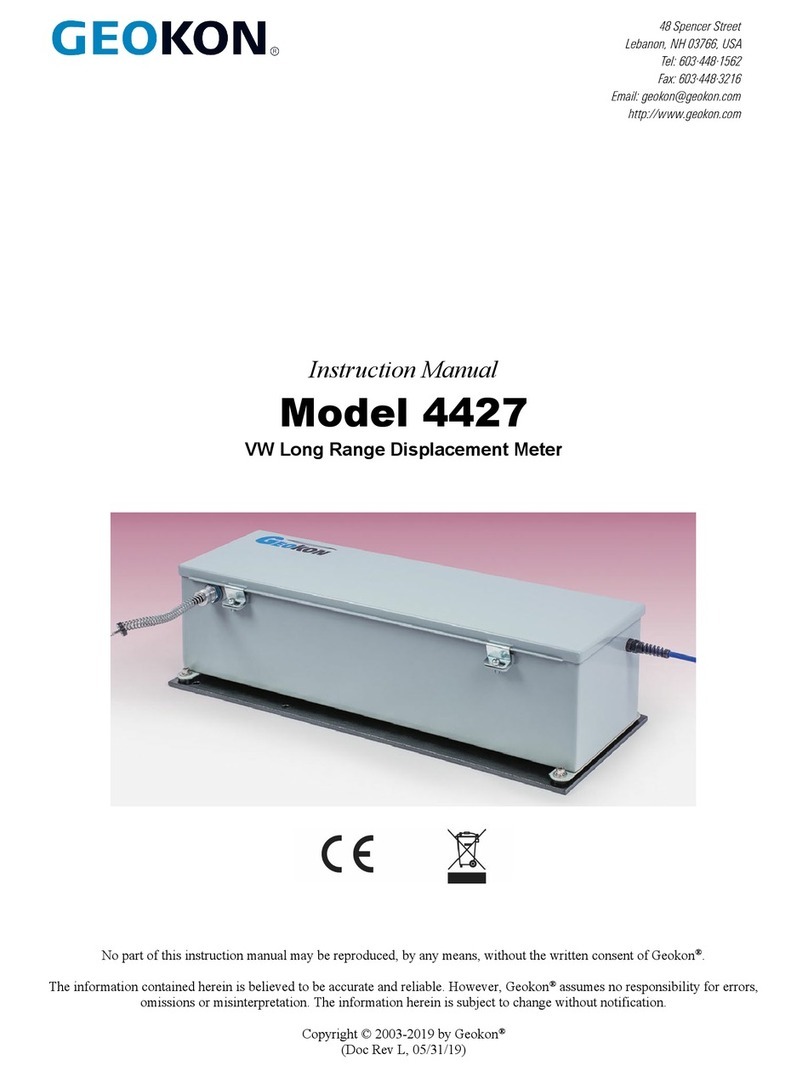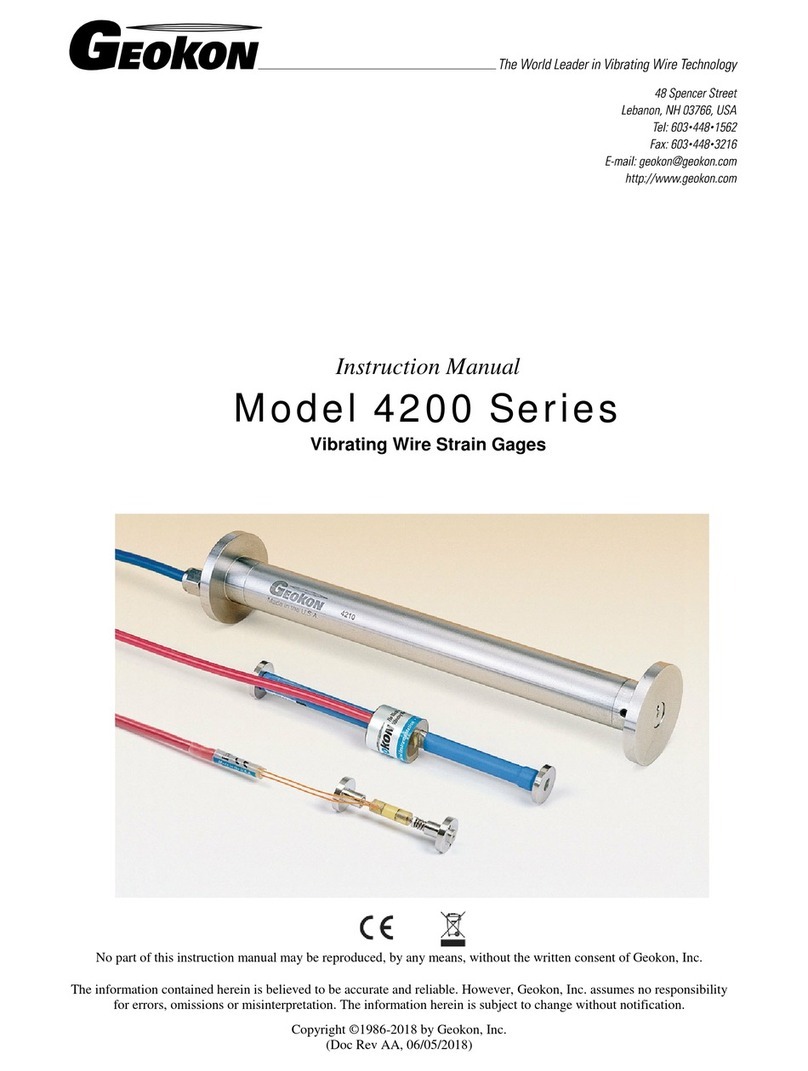
TABLE of CONTENTS
1. INTRODUCTION...................................................................................................................................................1
1.1 THEORY OF OPERATION.......................................................................................................................................1
1.2 TILT SENSOR CONSTRUCTION..............................................................................................................................2
2. INSTALLATION ....................................................................................................................................................3
2.1 PRELIMINARY TESTS............................................................................................................................................3
2.2 INSTALLING THE MOUNTING BRACKETS..............................................................................................................4
2.2.1 Mounting with a Drop-in Anchor................................................................................................................4
2.2.2 Mounting with an Anchor Rod....................................................................................................................5
2.3 SENSOR INSTALLATION........................................................................................................................................7
2.3.1 Installing Uniaxial Tiltmeters.....................................................................................................................7
2.2.2 Installing Biaxial Tiltmeters........................................................................................................................8
2.4 FLUID DAMPING ..................................................................................................................................................9
2.5 SPLICING AND JUNCTION BOXES..........................................................................................................................9
2.6 LIGHTNING PROTECTION ...................................................................................................................................10
3. TAKING READINGS...........................................................................................................................................11
3.1 GK-404 READOUT BOX.....................................................................................................................................11
3.1.1 Operating the GK-404 ..............................................................................................................................11
3.2 GK-405 READOUT BOX.....................................................................................................................................12
3.2.1 Connecting Sensors with 10-pin Bulkhead Connectors Attached.............................................................12
3.2.2 Connecting Sensors with Bare Leads........................................................................................................12
3.2.3 Operating the GK-405 ..............................................................................................................................12
3.3 GK-403 READOUT BOX (OBSOLETE MODEL)....................................................................................................13
3.3.1 Connecting Sensors with 10-pin Bulkhead Connectors Attached.............................................................13
3.3.2 Connecting Sensors with Bare Leads........................................................................................................13
3.3.3 Operating the GK-403 ..............................................................................................................................13
3.4 MICRO-10 DATALOGGER.................................................................................................................................14
3.4.1 Excitation..................................................................................................................................................14
3.4.2 Excitation Frequency................................................................................................................................14
3.5 MEASURING TEMPERATURES.............................................................................................................................14
4. DATA REDUCTION ............................................................................................................................................15
4.1 TILT CALCULATION ...........................................................................................................................................15
4.2 TEMPERATURE CORRECTION.............................................................................................................................15
5. TROUBLESHOOTING........................................................................................................................................16
APPENDIX A. SAMPLE CALIBRATION REPORT...........................................................................................18
APPENDIX B. SPECIFICATIONS.........................................................................................................................19
B.1 VIBRATING WIRE TILT SENSOR ........................................................................................................................19
B.2 THERMISTOR.....................................................................................................................................................19
APPENDIX C. THERMISTOR TEMPERATURE DERIVATION.....................................................................20
